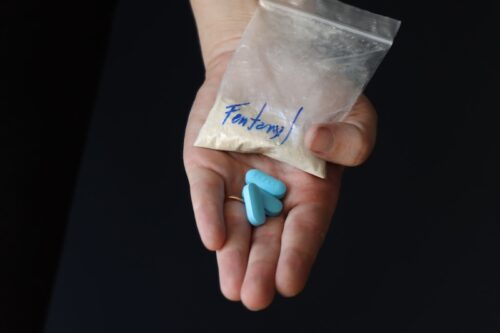Home » ECT in Severe Adolescent Mood Disorders
ECT in Severe Adolescent Mood Disorders
May 20, 2021
From The Carlat Child Psychiatry Report
John Raiss, MD.
Dr. Raiss has disclosed no relevant financial or other interests in any commercial companies pertaining to this educational activity.
REVIEW OF: Ghaziuddin N et al, J Child Adolesc Psychopharmacol 2020;30(4):235–243
ECT is the gold standard for treatment of severe unipolar depression in adults, with remission rates of 70%–90% in randomized trials. In bipolar depression, response rates are 50%–75%. A 2020 retrospective chart study reviewed ECT’s utility in adolescents with severe mood disorders.
The study consisted of 54 adolescents, mean age 15.8, with treatment-resistant mood disorders (two-thirds unipolar, one-third bipolar), who received ECT at the University of Michigan Medical Center from 1996 to 2010. Treatment resistance was defined as failure to respond to 3 or more mood-stabilizing medications combined with psychotherapy. The patients averaged 4 hospitalizations, 2 suicide attempts, and 7 failed medication trials (4 antidepressants, 3 antipsychotics and mood stabilizers), each of at least 6 weeks duration, with adequate dosage and good compliance.
The patients received a mean of 13.7 ECT treatments, almost all with bilateral electrode placement. The primary outcome measure was Clinical Global Impressions (CGI) score; response was defined as a CGI score of 2 (much improved), while remission was defined as a score of 1 (very much improved).
The response rate at the end of the index ECT treatment was 52.8%, while the remission rate was 15%, both lower than typical findings in adults. While rates increased at 6 and 12 months, this improvement occurred only with observed cases (OC) data, and with dropouts removed. There was minimal improvement at later time points when looking at last observation carried forward (LOCF) data. There was no difference in response or remission rates between unipolar and bipolar patient groups. Still, by the end of index treatment, suicidal ideation declined from roughly 80% to 40%; self-injurious behavior declined from about 50% to 18%; and school attendance increased threefold, from 20% to 60%. Side effects were minimal.
The limitations of this study included its relatively small size for a chart review, the use of non-blinded raters, the use of the CGI as the measure of treatment outcome (due to missing depression rating scale data), obtaining data from retrospective chart review, and diagnoses made without the use of standardized instruments.
CCPR’s Take
While ECT in adolescents appears less effective than in adults, it did produce clinically meaningful changes in these treatment-resistant patients for a year after the index ECT course. Keep it in mind as a possible tool.
Child PsychiatryECT is the gold standard for treatment of severe unipolar depression in adults, with remission rates of 70%–90% in randomized trials. In bipolar depression, response rates are 50%–75%. A 2020 retrospective chart study reviewed ECT’s utility in adolescents with severe mood disorders.
The study consisted of 54 adolescents, mean age 15.8, with treatment-resistant mood disorders (two-thirds unipolar, one-third bipolar), who received ECT at the University of Michigan Medical Center from 1996 to 2010. Treatment resistance was defined as failure to respond to 3 or more mood-stabilizing medications combined with psychotherapy. The patients averaged 4 hospitalizations, 2 suicide attempts, and 7 failed medication trials (4 antidepressants, 3 antipsychotics and mood stabilizers), each of at least 6 weeks duration, with adequate dosage and good compliance.
The patients received a mean of 13.7 ECT treatments, almost all with bilateral electrode placement. The primary outcome measure was Clinical Global Impressions (CGI) score; response was defined as a CGI score of 2 (much improved), while remission was defined as a score of 1 (very much improved).
The response rate at the end of the index ECT treatment was 52.8%, while the remission rate was 15%, both lower than typical findings in adults. While rates increased at 6 and 12 months, this improvement occurred only with observed cases (OC) data, and with dropouts removed. There was minimal improvement at later time points when looking at last observation carried forward (LOCF) data. There was no difference in response or remission rates between unipolar and bipolar patient groups. Still, by the end of index treatment, suicidal ideation declined from roughly 80% to 40%; self-injurious behavior declined from about 50% to 18%; and school attendance increased threefold, from 20% to 60%. Side effects were minimal.
The limitations of this study included its relatively small size for a chart review, the use of non-blinded raters, the use of the CGI as the measure of treatment outcome (due to missing depression rating scale data), obtaining data from retrospective chart review, and diagnoses made without the use of standardized instruments.
CCPR’s Take
While ECT in adolescents appears less effective than in adults, it did produce clinically meaningful changes in these treatment-resistant patients for a year after the index ECT course. Keep it in mind as a possible tool.
Issue Date: May 20, 2021
Recommended
Newsletters
Please see our Terms and Conditions, Privacy Policy, Subscription Agreement, Use of Cookies, and Hardware/Software Requirements to view our website.
© 2025 Carlat Publishing, LLC and Affiliates, All Rights Reserved.


_-The-Breakthrough-Antipsychotic-That-Could-Change-Everything.jpg?1729528747)



